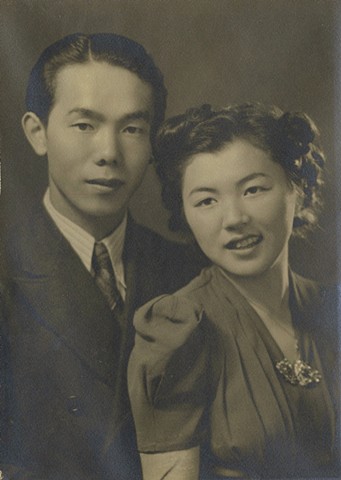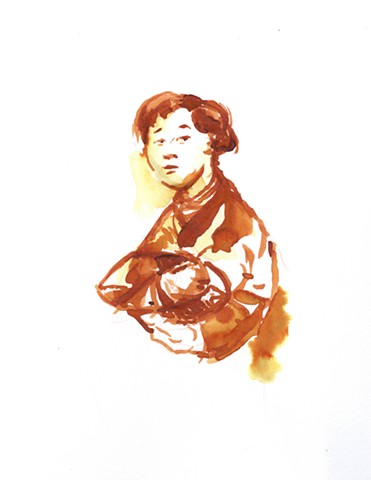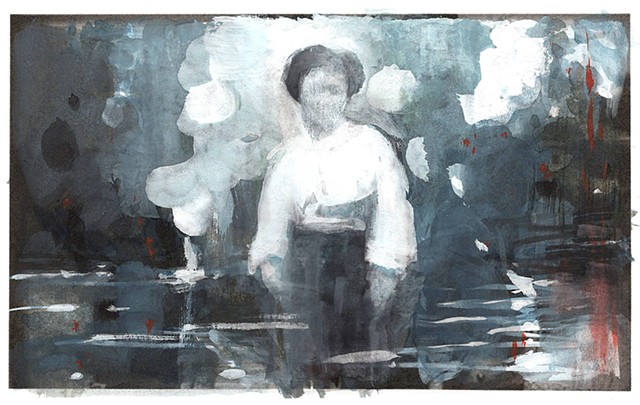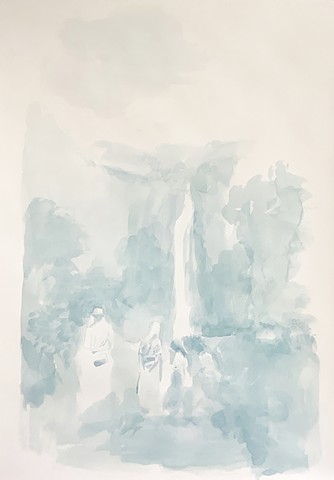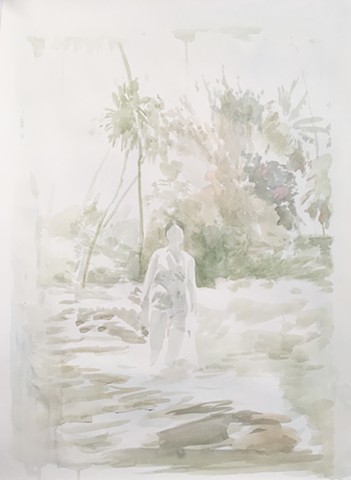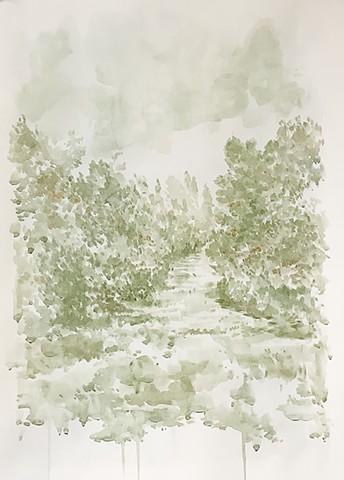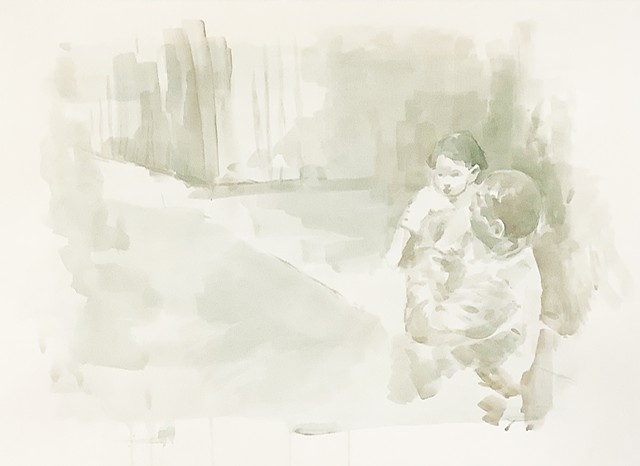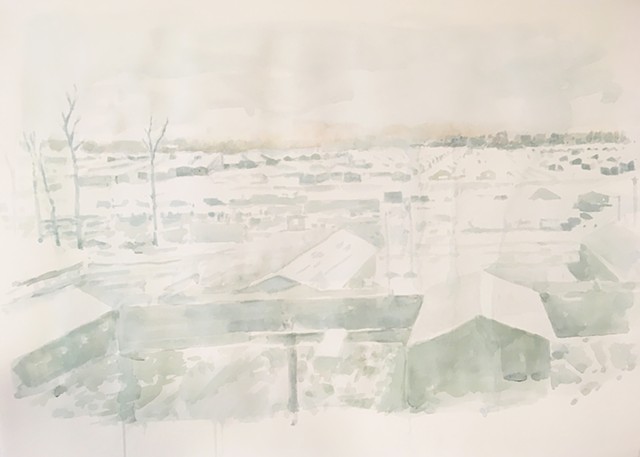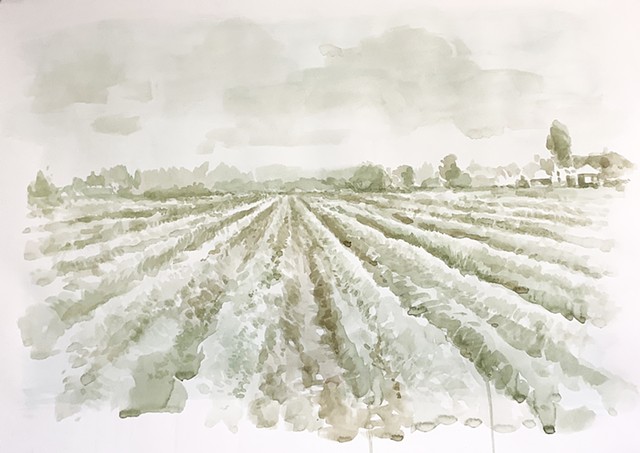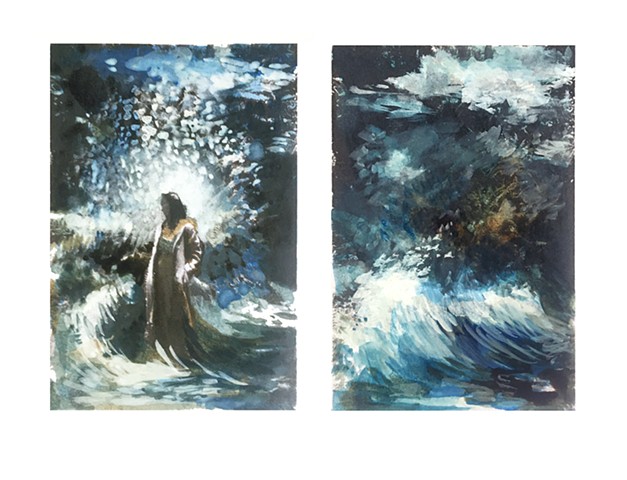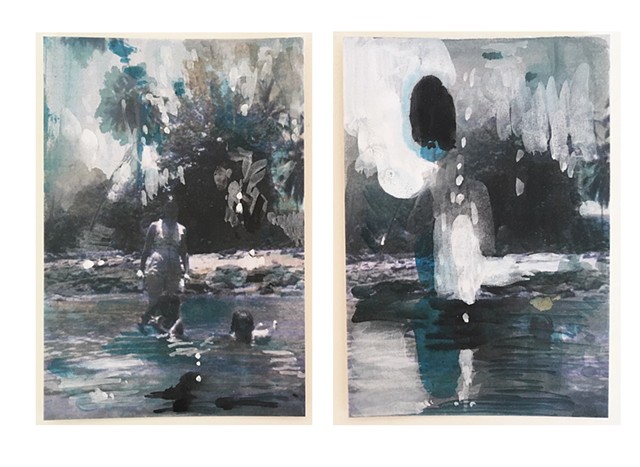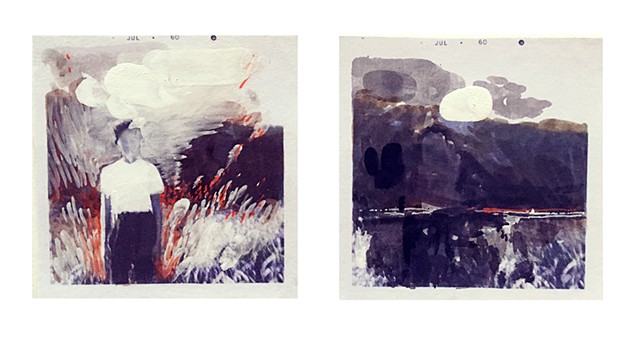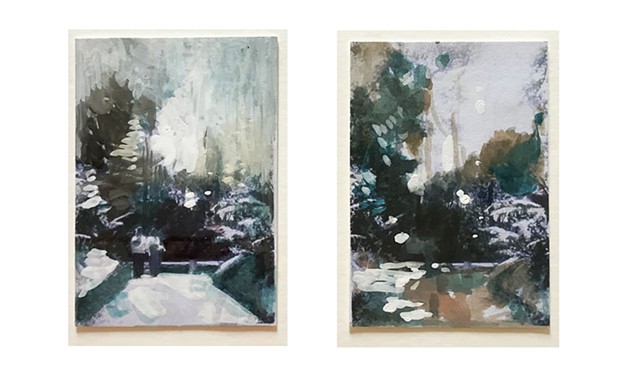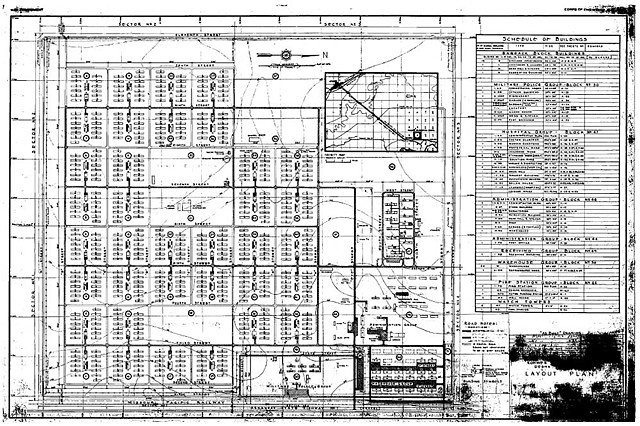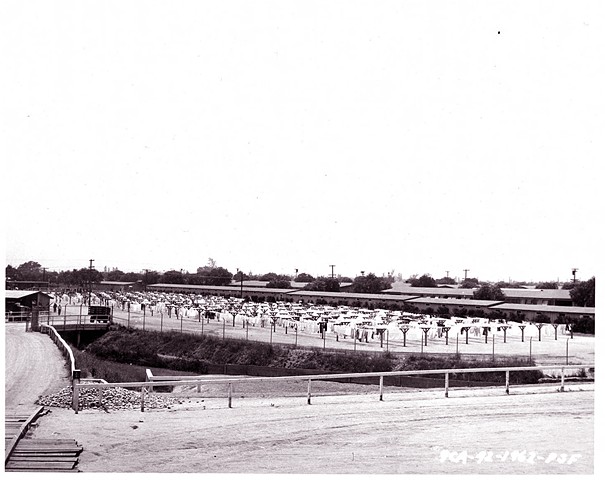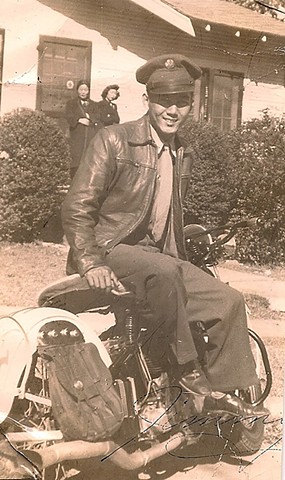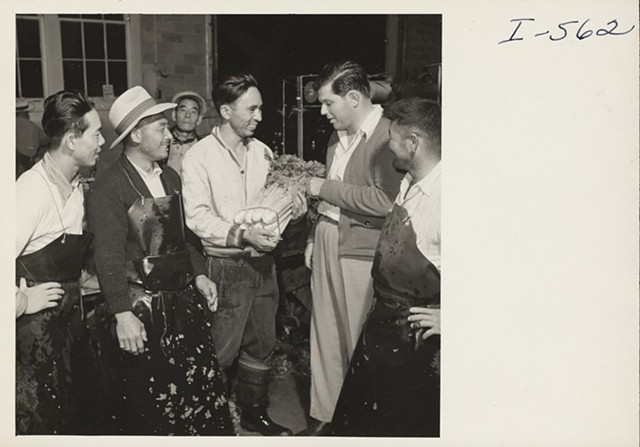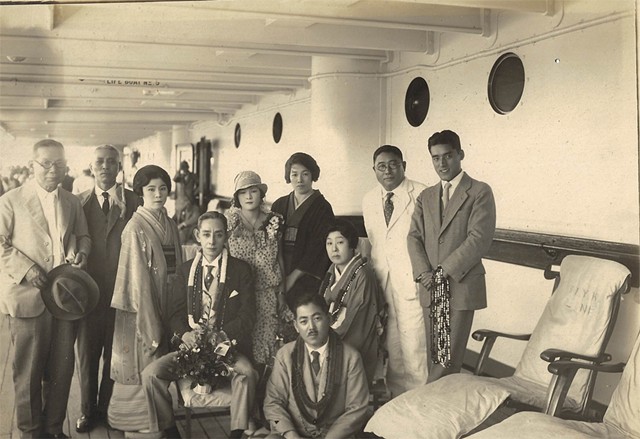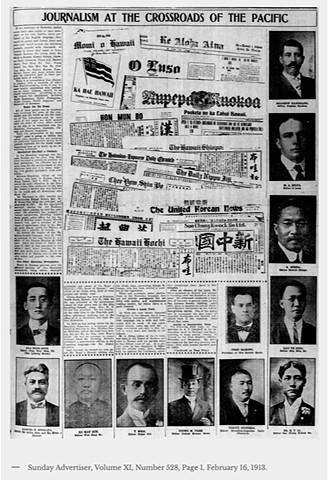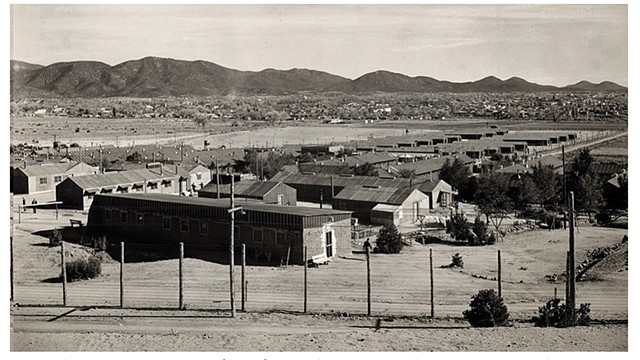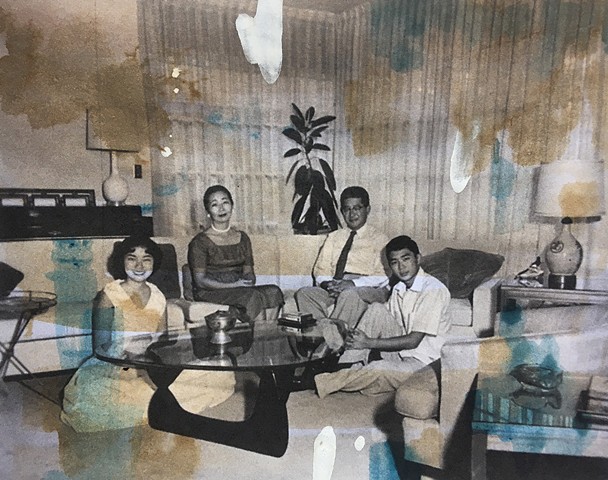After the War: A family history
"After the War" will be on view July 2 - 30, 2021 at the Community Arts Partnership Gallery, Ithaca, NY. The exhibit will be accessible in-person and virtually.
"After the War" is a work in progress.
This exhibit is made possible by a 2020 grant from NY Foundation for the Arts (NYFA), NYS Council on the Arts (NYSCA), the National Endowment for the Arts (NEA) and an SOS grant from Community Arts Partnership of Tompkins County, NY.
In After the War, painter Suzanne Onodera shares scenes of family lore and national history as glimpsed through the luminous haze of memory.
For thirty years, Onodera has painted imagined vistas where, in the words of critic Arthur Whitman, “any sense of here-and-there is necessarily slippery.” These compositions can evoke both peace and unrest with lush greenery, turbulent skies, still pools, and mountain fires—all rendered with gestural strokes and subtle tones that recall the action painters of the twentieth century and the landscapists of the nineteenth.
Onodera’s terrains are characteristically devoid of human signs, but in this new series, structures and figures begin to break through the ether. They have been called forth from recently- uncovered photographs, documents, and oral traditions that bear witness to two sides of the artist’s family and their experiences—alike and unalike—around the period of Japanese incarceration during World War II.
Onodera’s expressive brushwork, sometimes densely layered and sometimes ghostly in its sparing translucence, reminds us that these revelations are deeply intimate, even as they are broadly relevant.
Expulsion, confinement, and the question of loyalty are recurring themes in the news—and the search for meaning in ancestral roots is an endeavor without end.
JAPANESE INTERNMENT DURING WORLD WAR II
People of Japanese descent have been an integral part of American society since the mid-nineteenth century. But a century on, 120,000 innocent Japanese Americans were sent to concentration camps.
President Franklin D. Roosevelt’s executive order 9066, rationalized as “protection against espionage” in the wake of Imperial Japan’s strike on Pearl Harbor in December 1941, targeted any and all individuals of Japanese ancestry on the Pacific Coast—the majority of them American-born citizens.
The plan garnered broad civil support: the Los Angeles Times hissed, “A viper is nonetheless a viper wherever the egg is hatched.”
Taking only what they could carry, internees were transported to “centers” in remote stretches of inland country. Typical accommodations were hastily-converted stables or barracks with no plumbing, surrounded by barbed wire and armed guards. Medical care was inadequate and more than 1,800 deaths were registered. The curricula of the overcrowded, often sweltering schoolhouses emphasized “democratic ideals.”
In December 1944, the Supreme Court ruled that the government could not detain loyal citizens. Roosevelt’s order was rescinded, but the last concentration camp did not close until March 1946—six months after the war’s end. Many internees went back west to find their farmlands expropriated and houses razed to the ground.
For more information about Japanese internment and its legacy, visit densho.org.

